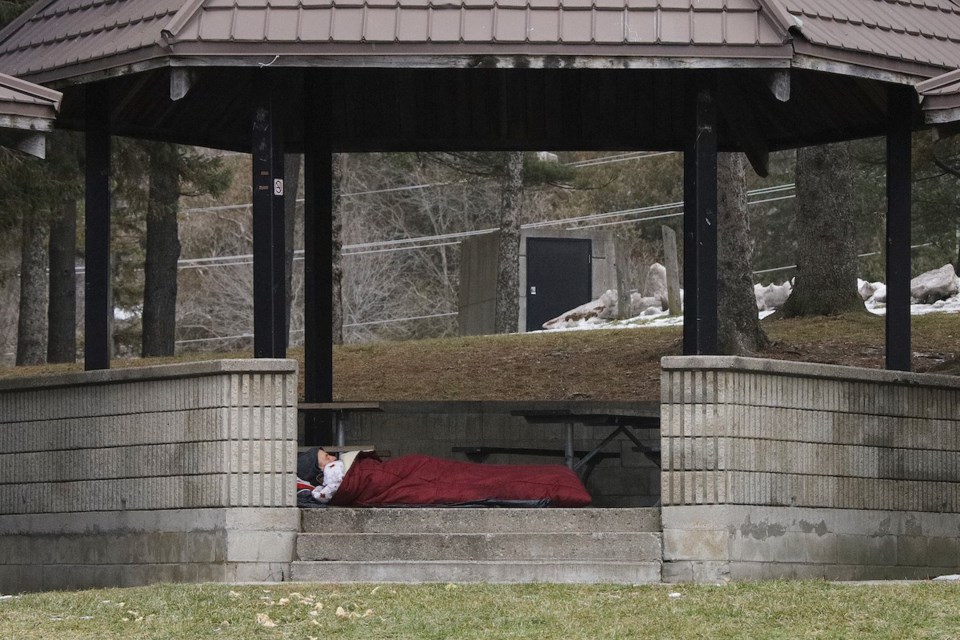Spending more than 31 years in the social services sector, 14 of those focused on housing and homelessness, I’ve heard countless statements about people experiencing homelessness that are simply not true.
A major challenge in ending homelessness across the country stems from the lack of awareness as to how large the homelessness crisis is. There is simply not enough education surrounding how we got into this crisis, and how to solve it.
Call me naive, but I believe most people really care about our most vulnerable, and if they truly knew the depth of the problem we face in Canada, and the truths surrounding it, they would take greater action.
Myth 1
Often we hear “homelessness is a choice,” or that people experiencing homelessness are at fault for their lack of housing.
This is not true.
Ron Ruthruff, an associate professor of theology and culture at the Seattle School of Theology & Psychology, said it best in a letter to the Seattle Times editor: “Homelessness is a cocktail of personal challenges, public failures, family disintegration, addiction and mental-health issues, coupled with a lack of affordable housing and underemployment.
“It is not a choice to live houseless — it is actually a lack of choices.”
I’d add to this by stating the failure of systems, like child welfare, education, and health systems, all have contributed to the rapid increase of homelessness over time.
Myth 2
Beyond thinking homelessness is a choice, many people relate homelessness to addictions, or mental health challenges.
The truth is most people experiencing homelessness simply can’t afford housing. With a one-bedroom apartment in the Greater Toronto Area averaging $2,000 per month, housing has become unattainable for most.
Seniors, youth, newcomers, and women fleeing violence are just some of the demographics that make up people experiencing homelessness. Various circumstances can lead someone into precarious housing. While it’s true some people seeking housing have addictions and mental health challenges, the best way to support people so these challenges don’t grow is through supportive, safe and affordable housing.
Myth 3
A common question you might hear when talking about vulnerable individuals: “Why don’t they just get a job?”
The truth is many people experiencing homelessness do work.
For the individuals who don’t work, it’s incredibly difficult to find and maintain a job when you don’t have a safe place to call home.
Imagine trying to find a job without a place to change your clothes, shower, or store your belongings.
Imagine trying to maintain a job when you have little to no access to transportation to get to and from work, or the means to work remotely.
Even if you find work, having a stable job no longer lifts someone out of poverty and into stable housing. To afford a one-bedroom apartment in the Greater Toronto Area, your job needs to pay more than $27 per hour.
This is why Blue Door created Construct, a social enterprise that provides training and wraparound support to vulnerable individuals. Construct links people to in-demand, well-paying and meaningful careers in the trades. With programs like this, we can and will prevent homelessness.
Myth 4
Recently, during conversations with many around the proposed development of men’s emergency and transitional housing in Aurora, often the topic of safety got brought up: ‘Individuals experiencing homelessness are dangerous.’
The truth is people experiencing homelessness are far more likely to be the victims of crimes than the perpetrators. People experiencing homelessness are truly vulnerable, and that vulnerability increases the risk of being victimized.
The key to keeping people safe is stable housing.
Myth 5
Many think homelessness can never happen to them. In Canada, 36 per cent of people have either experienced homelessness or know of someone who has. That translates to 1.6 million people in Canada alone.
The truth is homelessness can happen to anyone, and while there are many pathways into homelessness, unfortunately, there are fewer out.
Myth 6
In the challenging financial times we find ourselves in today, many will push back the idea that homelessness can’t be solved.
The truth is there are many examples of homelessness being solved, one of them in Medicine Hat, Alta., and, more famously, in Finland.
There are so many brilliant people and organizations with wonderful and powerful solutions to ending homelessness across the globe. The challenge we face is that they are not being implemented at a large or fast enough scale, with enough investment and government will to bring homelessness to an end.
To end homelessness begins with understanding homelessness.
I hope by debunking some of the common misunderstandings around it, we can work together so every Canadian has a safe, warm, supportive and affordable place to call home.
To learn more about homelessness and ways you can help, visit BlueDoor.ca.
Michael Braithwaite is the CEO of Blue Door, host of the housing and homelessness podcast On the Way Home, board chair of the youth homelessness-focused organization A Way Home Canada, and a tireless advocate for people experiencing homelessness.



